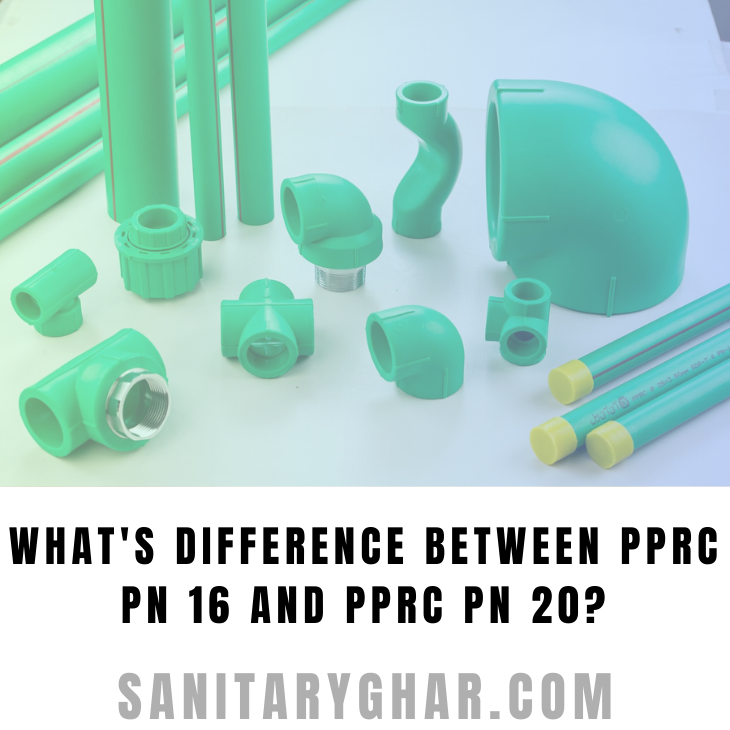It is essential to know the difference between numerous types of pipes in order to choose the correct piping system for your plumber or heating expert jobs. Many homeowners choose PPRC (Polypropylene Random Copolymer) pipes because of its long lifespan, resistance to heat, and lack of risk. Two common varieties of PPRC pipes are PN 16 and PN 20. But how are they different from one another practically? Here we will explore the main differences.
1. Standard for Pressure (PN)
The pressure nominal (PN) rating is the most important differentiator between PPRC PN 16 and PPRC PN 20 pipes. This grade is the highest pressure that the pipe can sustain for fifty years at a temperature of twenty degrees Celsius (68 degrees Fahrenheit).
- PPRC PN 16: Pipes having a PPRC PN 16 designation can endure pressures up to 16 bar.
- PPRC PN 20: This pipe material is capable of dealing with a greater maximum pressure of 20 bar.
Due to their greater pressure rating, PN 20 pipes are often thicker and more durable than PN 16 pipes, making them ideal for uses with higher pressures.
2. The Wall Thickness
If you compare PPRC PN 16 pipes to PPRC PN 20, you'll notice that the former has thicker walls to accommodate its higher pressure rating. Thanks to its thicker wall, the pipe can endure greater pressure and will hold up better under harsh conditions.
- PPRC PN 16: With its thinner walls, this is well-suited for medium-pressure applications.
- PPRC PN 20: For use under extreme pressure, that's the material of choice due to its relatively thick walls.
3. Applications
The primary consideration when deciding between PN 16 and PN 20 is the intended use:
- PPRC PN 16: Where the pressure is moderate, PPRC PN 16 pipes are often utilized in home water delivery systems. Houses, flats, and smaller businesses can also use them for hot and cold water systems.
- PPRC PN 20: The increased pressure tolerance of PPRC PN 20 pipes makes them ideal for usage in high-rise buildings, industrial settings, and central heating systems, among other potentially risky locations. Also, when a higher pressure is needed to keep water flowing over a long distance, these are the ones to choose.
4. Resistance to Heat
Since they are capable of handling high temperatures, PN 16 and PN 20 pipes can be used to supply hot water. While both types of pipes can withstand high temperatures for extended periods of time, PPRC PN 20 pipes, with their thicker walls, sometimes perform marginally better.
5. Financial Consideration
Pipes with a PPRC PN 20 pressure rating and thicker walls cost more than those with a PPRC PN 16 rating. Analyze the unique needs of your project in light of the price differential. The use of PN 16 pipes, which do not require higher pressure, can be a more economical and satisfying alternative in certain situations.
6. Setting Up and Managing
You can install and handle both kinds of pipes with reasonable ease because they are flexible and lightweight. Cutting and welding the thicker PN 20 pipes during installation may, however, necessitate a little more skill. The system will function at its peak efficiency after a professional installation.
Final Thoughts:
Be sure to compare the requirements of your project with the pipe's specifications before making a final decision between PPRC PN 16 and PPRC PN 20 pipes. In comparison to PN 20, which offers the additional durability required for high-pressure applications, PN 16 pipes are more cost-effective for regular residential and commercial water supply systems.
Your plumbing system's efficiency and longevity depend on your ability to make educated decisions, which you may do by learning about these distinctions. Picking the correct pipe is an investment in the long-term health of your heating or plumbing system as well as the short-term success of your project.







